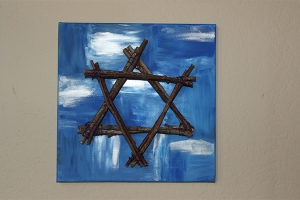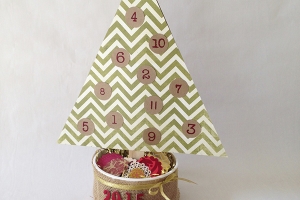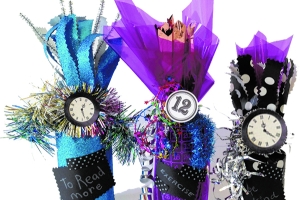
To commemorate Black History Month, do some research as a family on the Underground Railroad and Harriet Tubman. Then construct your own bowtie quilt square with paper.
Discussion for families: Harriet Tubman was perhaps the most famous and successful “conductor” of the Underground Railroad, the intricate network of people, safe houses and trail routes followed by men and women enslaved in the south to make it to freedom in the 1800s. Along the way, trail demarcations such as broken pottery and chalk symbols on barns let Tubman and those who escaped know where to travel or lodge safely. It is even believed that hanging quilt “codes” helped lead the way to safety. There are several quilt patterns thought to have been used, such as the bowtie quilt block pattern, which let travelers know that finer clothes were needed to help them “blend in.” Here’s how to make a bowtie quilt block square out of paper.
Supplies
3 ft. piece of yarn or string (white or color that coordinates with paper)
Scissors
Paper punch
Cardstock or construction paper
White craft glue or hot glue
Glue stick
Directions
- Dip two inches of one end of the yarn through glue and remove excess. Allow to dry or harden. This process prevents fraying and makes it easier for less coordinated fingers to thread the yarn through the holes. Note: hot glue works faster and dries harder.
- Turn a piece of cardstock vertically (longer sides are on the left and right and shorter sides are on the top and bottom). Fold the paper diagonally so that the right bottom corner touches the left side and what was the bottom edge is now perfectly in line with the left side. Smooth down the diagonal crease and cut the excess paper off the top to create a perfect triangle.

- Open the paper to reveal a perfect square. Take the bottom left corner and line it up with the top right corner and crease. Open it up to reveal an “X”.
- Take both bottom corners of the paper and match them to the top corners. Smooth the crease and open.
- Turn the paper 90 degrees and repeat matching the corners and smoothing the crease. You should now have a square with a creased cross and a creased “X” connecting all four corners.

- Take one of the four corners, fold to the exact center and crease the fold. Repeat for each corner creating a smaller square. Unfold.

- Repeat this process (steps 2 through 6) with the second colored piece of paper.
- Using ONLY ONE piece of paper, cut along all the fold lines to create small triangles (see photo). You will need half of these for one “quilt” block.

- Using the creases on the remaining whole piece of paper as guidelines, glue the triangles down with white glue or a glue stick. Refer to the pattern in photo, if needed.
- When dry, punch holes along the edges of each side about one inch apart. Thread the yarn through the holes all along the edge and glue or tie the ends down.

Display as a single quilt square or make several squares in different colors to display as whole “quilt.”
For more designs and their meanings, visit your local library for Barbara Brackman’s book Facts & Fabrications-Unraveling the History of Quilts & Slavery: 8 Projects, 20 Blocks, First-Person Accounts or download for Kindle on Amazon.
To learn more about the Underground Railroad, visit the Harriet Tubman Underground Railroad National Historic Park website: www.nps.gov/hatu/index.htm.
______________
Emily Dolton is a local artist and mom of two.













